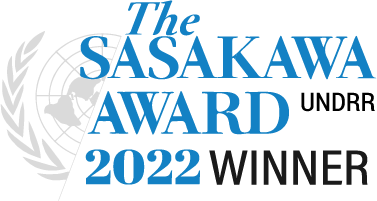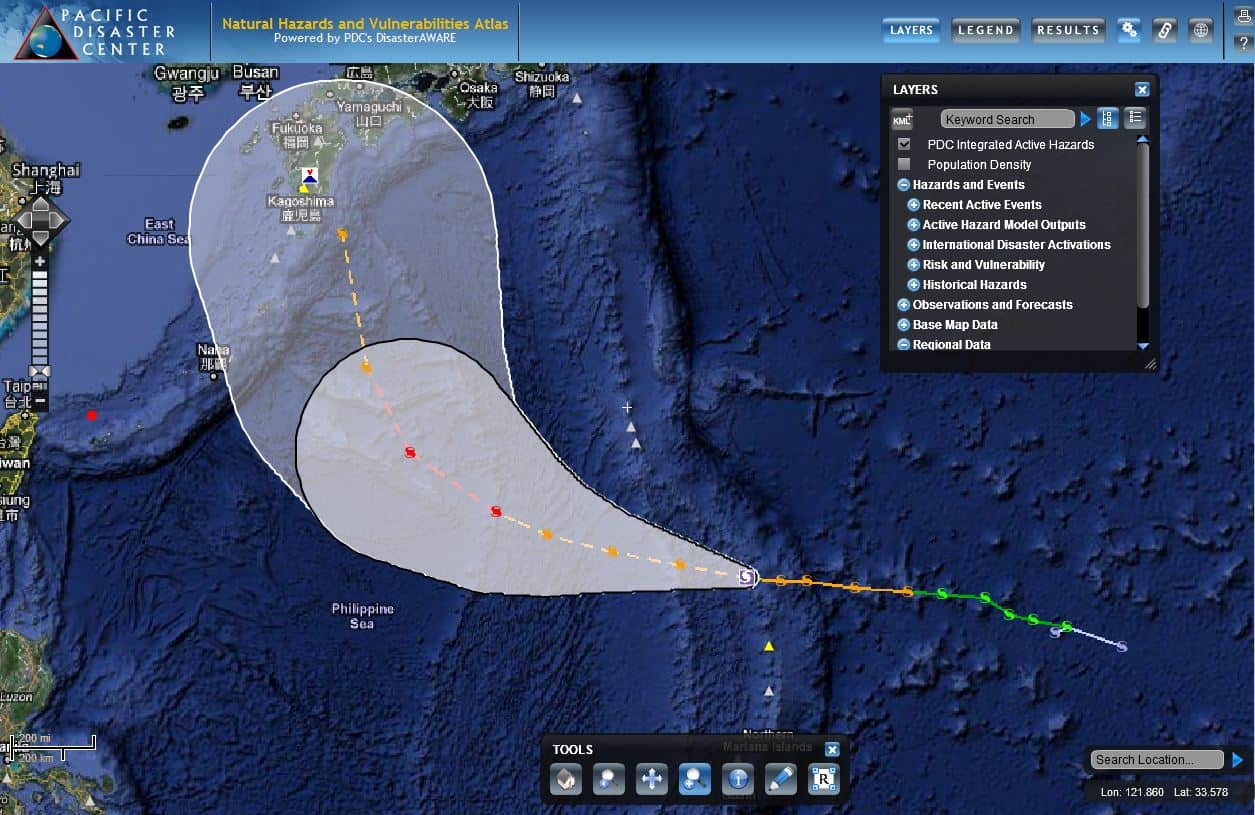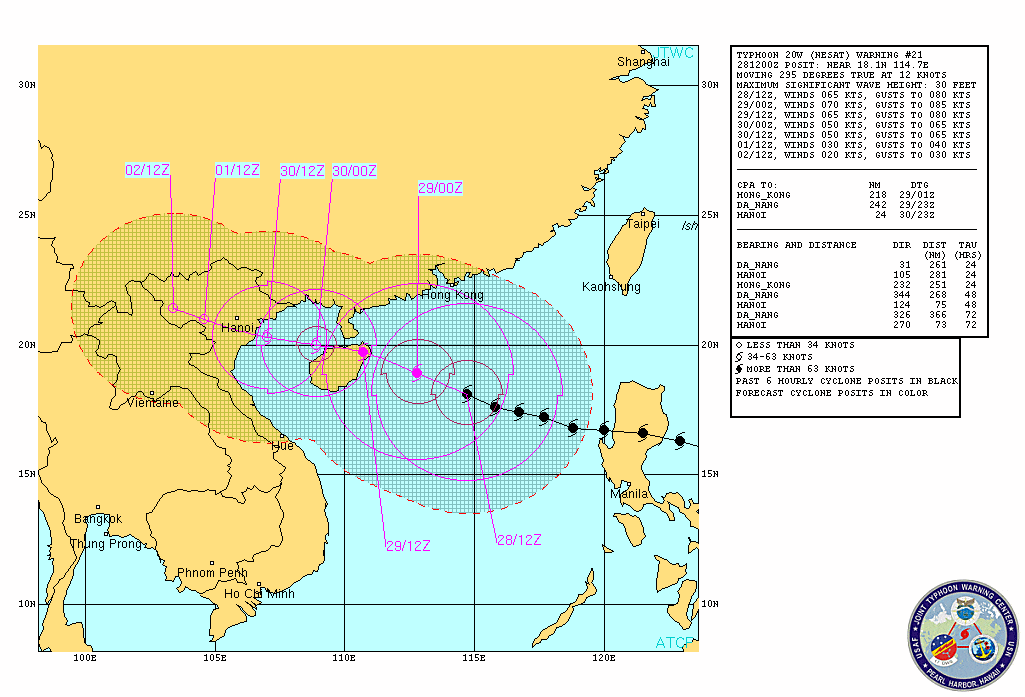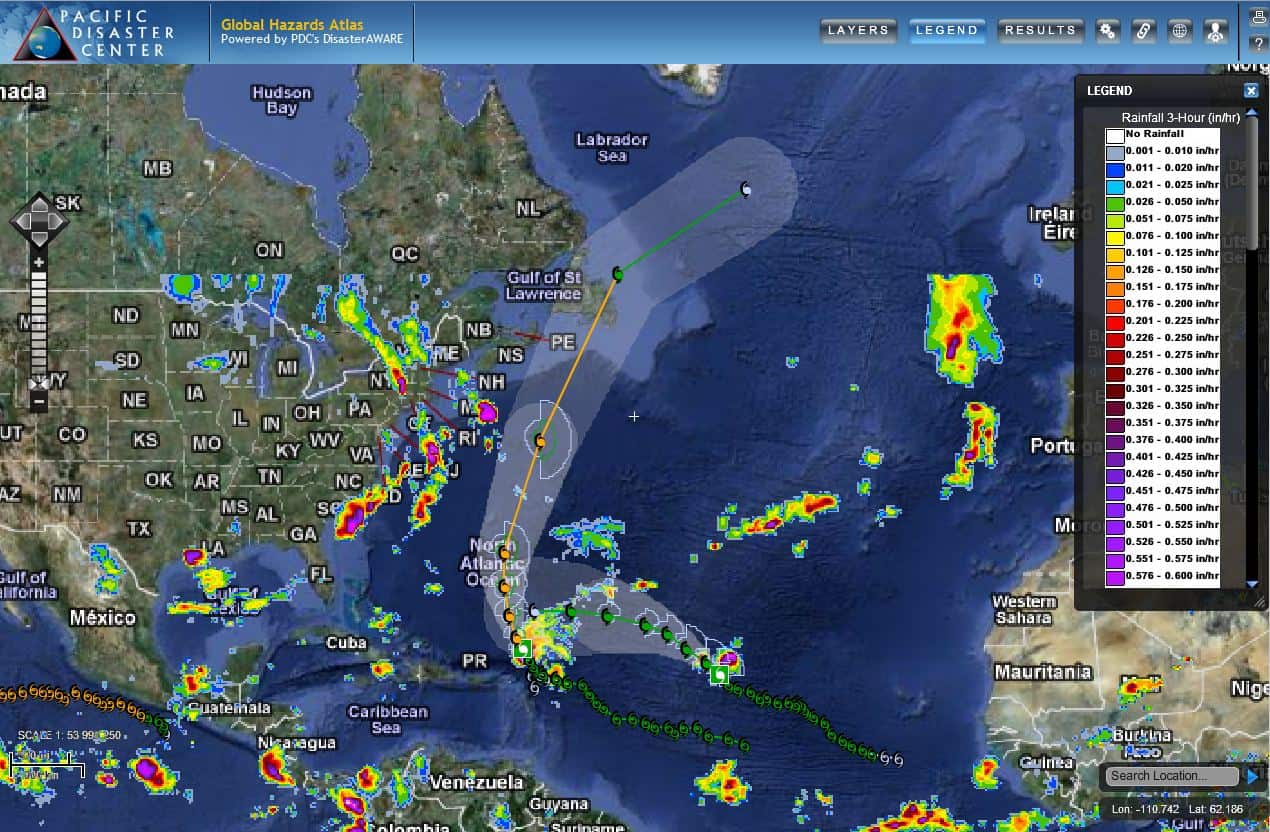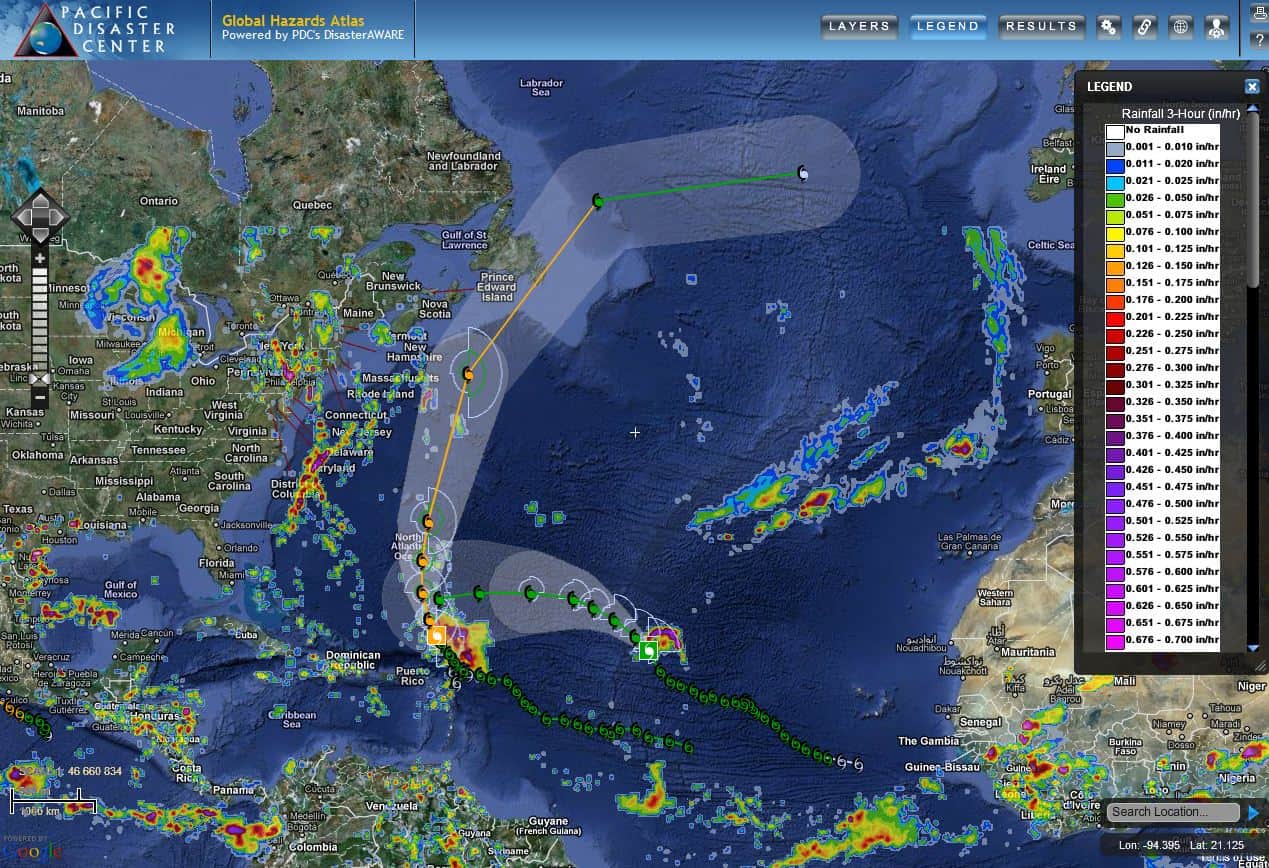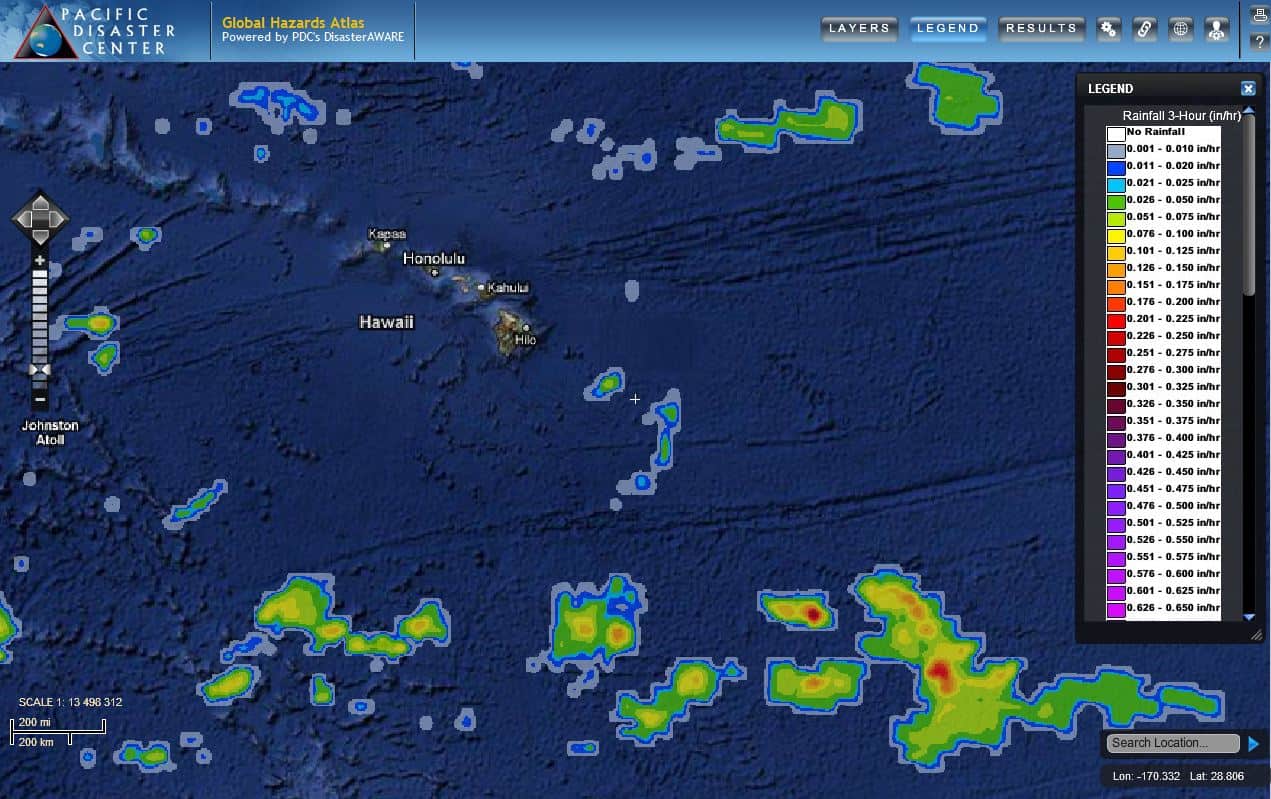An all-encompassing disaster risk reduction initiative was launched by the Philippines on July 23, 2019, taking aim at the country’s extreme hazard exposure. Facing continuous threats from typhoons, volcanoes, earthquakes, tsunamis, floods, landsides, and emergent risks from climate change, the Philippines is ranked highest among all Southeast Asian nations for disaster risk, and near the top for economic losses.
As severe losses and ongoing socioeconomic setbacks take their toll on communities throughout the Philippines, a new collaboration is advancing with the Pacific Disaster Center (PDC)—a University of Hawaii applied science and research center—and the Philippines national government on two state-of-the-art programs. These include a National Disaster Preparedness Baseline Assessment (NDPBA) and the deployment and operationalization of a new custom hazard monitoring and early warning system, PhilAWARE. Both projects will leverage PDC’s cutting-edge DisasterAWARE technology for Hazard Monitoring and Early Warning (HM/EWS), as well as risk reduction research and mitigation strategies to support operational decision making.
“NDRRMC is constantly in need of situational data, readily available to them at any given time for crucial decision-making and planning against arising threats ahead of time. The PhilAWARE Project gives us that innovation and technology,” said the Philippines’ Under Secretary Ricardo Jalad, Executive Director of the Philippines National Disaster Risk Reduction and Management Council (NDRRMC) and Administrator of the Philippines Office of Civil Defense (OCD), in his opening remarks kicking off the new programs at Novotel Manila Araneta Center. With 100-plus attendees representing more than 30 agencies and organizations from across governmental, nongovernmental, and private sectors present, participants were called to work together to reduce disaster risk in support of the year-long initiative and beyond.
“We are concentrating our collective efforts with our longtime colleagues and experts in the Philippines on two collaborative programs to enhance the capabilities of decision makers with new tools and information,” said PDC’s Deputy Executive Director Chris Chiesa who also directs the Regional HM/EWS program under which PhilAWARE will be deployed. According to Chiesa, PDC’s in-depth baseline risk and preparedness assessment within each province of the Philippines will help identify meaningful and effective interventions. “We will also be working closely with OCD and their partners to deploy a robust national hazard monitoring, early warning, and decision support system called PhilAWARE—powered by PDC’s DisasterAWARE platform—to support the unique disaster preparedness and response needs of the Philippines,” Chiesa continued, explaining the complementary nature of both programs. He said critical decision-making data and baseline assessment results will be integrated into the new PhilAWARE system; while the system itself will shore up needs likely to be identified in the assessment.
Along with NDRRMC members and other government agencies of the Philippines, other key participants were program funding partners USAID Office of Foreign Disaster Assistance (OFDA) and the U.S. Indo-Pacific Command, as well as implementation partners, university and other research intuitions, nongovernmental organizations, and intergovernmental organizations most active in disaster response.
“We see many similarities between Indonesia and Philippines and we are eager to see how we can adapt our platform and successes to the Philippines,” said Nashin Mahtani, Director of Yayasan Peta Bencana speaking about the crowd-sourced flood reporting tools and data solutions it will provide as a key partner of the program. She said she is very happy to bring their award winning solutions developed under the PDC InAWARE program with BNPB in Indonesia to the Philippines and to share its many successes. Yayasan Peta Bencana will help develop similar tools and automation processes for the Philippines, allowing citizens to participate in the disaster management cycle by reporting hazard incidents through social media.
“It is always our goal to work with local people and local communities, local governments, disaster management agencies, and universities on how they can use the data we create and how they can rely on themselves to keep the data updated. We are working to achieve mutual benefits for all organizations represented here, and direct immediate benefits for the Philippines for preparedness, response, recovery, and better decision making,” said Indonesia Country Manager Yantisa Akhadi of Humanitarian Open Street Map (HOTOSM). He said, not only can the data be used on a professional level by local and national government, but by project partners PetaBencana and other international groups. HOTOSM was another key partner of the PDC InAWARE project, helping to fill gaps in critical geospatial data needed for effective disaster preparedness and response. In the Philippines, HOT will help collect and curate local-scale geospatial information including neighborhood boundary information, transportation, and critical lifeline assets such as hospitals, schools, police, and fire stations.
According to Dr. Erin Hughey, Director of PDC’s Global Operations and NDPBA Program, the services that PDC provides support the gamut of U.N. Sendai Framework priorities for disaster risk reduction. She explained that PDC’s baseline assessment provides detailed insights at the subnational level to support anticipatory disaster risk management and more effective investment in disaster risk prevention for increased resilience. She went on to highlight how PDC’s early warning and decision support technology fully integrates these insights to offer highly effective operational preparedness and response tools.
“We are bringing the entire cadre of these solutions to the Philippines, and engaging local, regional, and national actors to help take part in the sustainability of the solutions we co-develop. This is what sets PDC apart and makes this disaster risk reduction program in the Philippines something to follow as we continue our activities over the course of the next year,” said Dr. Hughey.
Follow us on Facebook
#SaferWorld #DisasterAWARE
